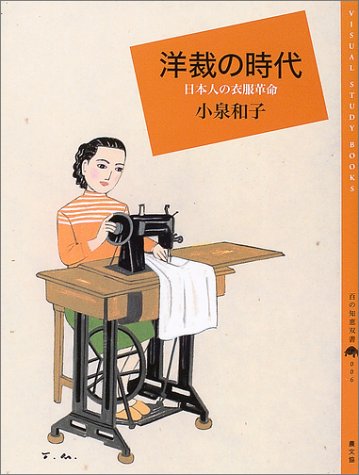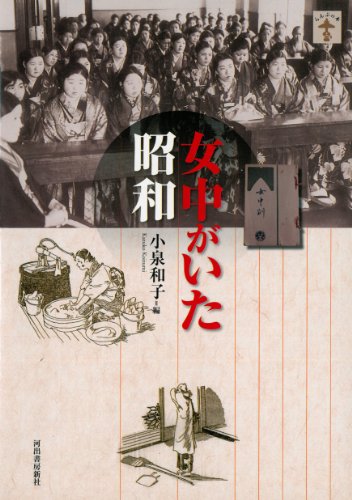4 0 0 0 洋裁の時代 : 日本人の衣服革命
- 著者
- 小泉和子編著
- 出版者
- 農山漁村文化協会 (発売)
- 巻号頁・発行日
- 2004
2 0 0 0 OA 江戸の暖簾
- 著者
- 小泉 和子
- 出版者
- 国立歴史民俗博物館
- 雑誌
- 国立歴史民俗博物館研究報告 = Bulletin of the National Museum of Japanese History (ISSN:02867400)
- 巻号頁・発行日
- vol.14, pp.75-86, 1987-03-28
Noren is a well-noted symbol of Edo merchants as marked in the restored model. The way of hanging a screen at the entrance of a store to separate it from the outside world had long been put into practice which was the original form of Noren. In the Heian period, screens were used in the homes of aristocrats called Shinden-style house (the palace style of Heian period architecture), as the partition which later developed into the original form of Noren bringing its design gradually into sophistication. The term ‘Noren’ was first observed in the Muromachi period used as a screen at the entrance of a temple for Zen study. The present style of Noren emerged when such an entrance screen showed the effect of a signboard. It was due to the economy being activated in the 1600s, but the designs were simple. It was in the 1700s when colourfully designed Noren emerged. On the other hand, elaborately designed Noren came to be used inside the theatres and was distinguished from others by being called ‘Uchinoren’ (Noren for the interior). Noren won its status as the symbol of business at merchants' shops, while small-sized Noren made with rope called Nawanoren also came into use at small restaurants like taverns or saloons where sake was served. This created a local scene as well those days. Another type of Noren also emerged in Edo at the beginning of the 1800s : A short in length but wide Noren attached along a stick was fixed outside of a stretched-out, arcade-shaped eave at the entrance of a shop. There, Noren did no longer play the role of screen but did that of a substantial wall. This tactful measure was an inevitable outcome of necessity having to make as many shops as possible on a narrow ground originally planned to build the road. This stirs the imagination that there could have been a different characteristic on building up a city in Edo from that in Kyoto.
1 0 0 0 日本家具・室内意匠史を教えて6年(小泉和子先生御退職特集)
- 著者
- 小泉 和子
- 出版者
- 京都女子大学・京都女子大学短期大学部
- 雑誌
- 生活造形 (ISSN:09199349)
- 巻号頁・発行日
- vol.52, pp.1-2, 2007-02-08
1 0 0 0 OA 「歴博本江戸図屏風」と鴻巣人形
- 著者
- 小泉 和子
- 出版者
- 国立歴史民俗博物館
- 雑誌
- 国立歴史民俗博物館研究報告 = Bulletin of the National Museum of Japanese History (ISSN:02867400)
- 巻号頁・発行日
- vol.60, pp.63-78, 1995-03-31
「歴博本江戸図屏風」の右隻第五扇と六扇の下部に人形を並べた家が描かれているが、この家は人形店であること、しかも並べてあるのは当時、幼児の疱瘡除けとして使われた土人形か張り子の赤物であるということがよみとれる。この場所は浅草寺の門前通りであると判定されるが、この地域は江戸時代から近代に至るまで人形産地であった。このことは貞享四(一六八七)年の『江戸鹿子』をはじめとして幾多の地誌類によって確認される。しかも当初は素朴な土人形や張り子人形であって、後世のいわゆる雛人形とよぶ着付け雛にかわるのは一八世紀前期の享保年間からだという。するとこの情景は、素朴な人形として描かれていることからみてすくなくとも一八世紀にまで下がることはないだろう。浅草ではじまった赤物は、やがて武州の鴻巣で発展し、さらに練物で作られるようになって鴻巣名物となる。熊谷・川越・大宮・越谷・鴻巣など武州一帯では一七世紀中期すぎころから野間稼ぎとして雛人形の製造がはじめられていた。その中で鴻巣では一七世紀後期になると、この地域一帯で盛んになった桐簞笥製造の際、多量に出る大鋸屑を用いた練り物を開発し、好評を博すようになったのである。これは鴻巣は江戸との関係が密接であったため、おそらく早い段階から江戸の情報が入り、浅草を真似て赤物を製造していたからではないかと考えられる。ともあれ一七世紀中期すぎには鴻巣でも雛製造をはじめていたとすると、浅草はそれより早かった筈であるから、この場面は一七世紀中期以前ということになるのではないか。

